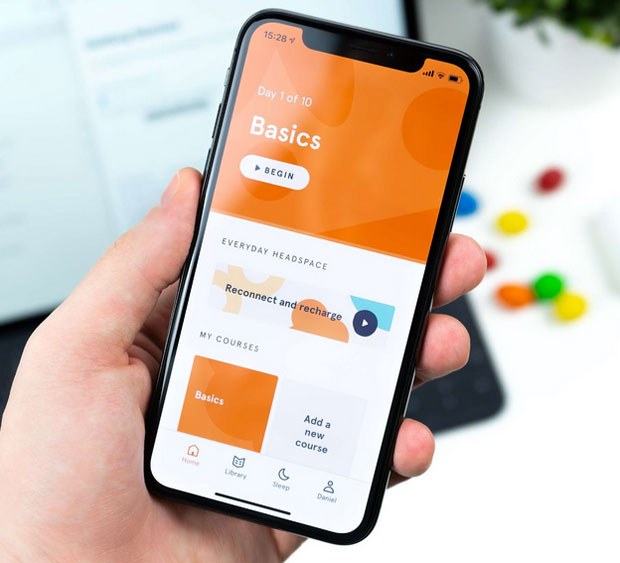
What Makes a Meditation Mobile App a Rewarding Choice for a Startup?
A very tough and busy schedule, increased mental stress and physical activity often entail appearing various mental health disorders. In some cases, such a tense and busy lifestyle leads to the manifestation of psychosomatic symptoms. People are searching for methods to return energy and normalize their psychological and physical state. Let’s be honest: alcohol and tranquilizers aren’t promising choices for keeping well-being.
Some people try to preserve their emotional balance with the help of various medications. Though there’s a universal method that can tangibly improve well-being without harmful side effects: we’re talking about the art of meditation. The recognition of such a method is expanding, and if you’re looking for a way to help people feel better, dig into the issue. The Purrweb team structured the information on the meditation mobile app development, answering the most common questions that new digital entrepreneurs usually ask. If you seriously consider a meditation mobile app as a possible startup, lean on the recommendations accumulated by the experts.

How people started using specific apps for resolving their psychological issues
How did people resolve their psychological problems before any online meditation services were invented? They usually went to specific training or yoga classes offline. It took time and effort to get into a training center, and there wasn’t an opportunity to build those sessions into a timetable seamlessly. The benefit of a meditation mobile app is its availability in any place/at any time. It doesn’t require additional effort to implement a new habit to meditate into your lifestyle.
Types of meditation apps
Breathe, Unplug, Inscape, Buddhify… A meditation mobile app can be honed for individual tasks: managing anger, coping with stress, or learning deep relaxation techniques. Though there are hundreds of products in the niche, the major part of the market is absorbed by Headspace in a pair with Calm. All the apps in the field can be divided into a few groups:
- The apps for newbies serve as remote teachers for training in the right breathing and managing attention. Such apps provide guided exercises or sessions for various purposes.
- The apps for experienced participants who prefer to meditate on their own. Such an audience values the opportunity to create a custom session: add appropriate sound effects, and music, regulate longitude, and other settings.
- The mixed type that takes into account the interests of users in both groups. Such an app is universal since the advanced user can learn something new if he wants, and a newbie can level up to create his own format of the session.
The set of features that’s universal for a meditation mobile app
If you’re aspiring to attract users to a new meditation mobile app, try to keep a balance between the functions that are familiar to everyone and the ones which are unique to your product. And if the shtick of the app is up to you, we’re planning to describe the features that meditators expect to find in any application of that type.
Sign up / Sign in page
This is like the cover of a book that captivates people to read it. When it’s eye-catching and enticing, the possibility of engagement is higher. Let the visitors get on board with just a pair of clicks. Don’t bother with meticulous questionnaires or worksheets with too much personal information. Ask for a telephone number (login) and a personal password – that’s enough for joining the app’s community.
Personal profile
Every participant wants to express himself on the personal page: photo, bio, interests, and other information can help people to communicate with each other and find like-minded friends. Networking functionality adds scores to the app since people are interested in inspiring connections: consider the implementation of a messaging functionality. So, you’ll help people search for their “meditation buddies”.
Meditation library
The heart of any meditation mobile app is a treasury house of audio and video content training people how to breathe properly, manage their thoughts, maintain mindfulness, and be able to relax. When someone jumps into the ocean of lessons/training courses, don’t let him lose: provide clear navigation in this plethora of info. There are two ways to save the situation:
- Subdivide the content into thematic groups by the problems they are focused on.
Let’s list some of them: coping with stress, increasing mindfulness, tracking harmful habits, overcoming specific fears (aerophobia, social phobia, fear of public speaking, etc.), calming and relaxation, searching for inspiration, tuning for effective work, communication, or for serene sleeping.
- Oversee a search bar and filtering settings.
Such a tool will arm the visitor with the opportunity to select videos exactly his/her problem. If one wants to eliminate arachnophobia, the app will show a list of relevant lessons.
Settings and Navigation tools
By making the meditation mobile app clear and convenient even for highly sensitive people, expand the audience: people usually migrate where they can enjoy all the benefits of the product. When the meditating ones can choose the type of voice, sound effects, relaxing music; the purpose of the session, its speed, and longitude, they feel in control. The leverages for stopping/rewinding lessons are necessary as well.
Individual progress tracking
Nothing serves for motivation better than measurable results. Demonstrate the graphics with achievements to users if you want to keep them on the path.
Push notifications
Another way to boost users’ motivation is to remind them about regular sessions. Inspiring messages breaking daily routines also can facilitate the participants to stay tuned.
Payments services
Since the financial goal of any business is profit-making, provide seamless money transfers for in-app purchases/subscriptions.
Add those payment services that are preferred by the users: it could be credit/debit cards, e-payment systems, and even cryptocurrencies in some locations.

Six steps to bring an app to life
The right consistency of actions determines how fast you will achieve the goals. As a cook follows the receipt in order to make the exact dish he dreamed of, the digital entrepreneur complains about his activity with the next plan.
- Articulation of a project idea
The first condition of a fruitful starting a digital business is to explore the market, compare the competitors and clear up the vision of the future product. If you exactly know what you’re going to offer, to whom and why people will prefer it to the alternatives, congrats! You’re on the right path.
- Find a competent partner
There’s a wide spectrum of tasks that should be performed by the experts in order to make your users happy. Read reviews, blogs and check portfolios when selecting a contractor: pick up the one whose aesthetics coincides with yours, and the products in the portfolio are relevant to your expectations. A cute partner is a guarantee of the perfect implementation of the idea.
- Create a prototype: make the app visible
The visualization of your idea presupposes describing the user flow and subdivision of all functions in various groups depicted on the screens. The UI/UX design team construct a clickable prototype that is like a cover of an interactive book: you can see how the app will look and how the navigation will be organized, but there’s no really working features: you can’t put the button and listen for a melody in this book. The UI/ UX designers will help you to select the fonts, buttons, illustrations, and color palette: calming colors are essential for transferring the core value of the product. However, the prototype is enough work that you can show to investors and ask for feedback from users.
- Build a working MVP
The prototype of a meditation mobile app is a robust foundation for further development. By limiting the set of core features and fledging it with functionality, build an MVP. This is a perfectly tailored product with a focus on core functions. In case the app will find the support of customers and investors, it can be gradually scaled into a full-format solution.
- Gathering feedback and analyzing statistics
There’s no need to fantasize about the preferences of the people who you’re addressing a meditation mobile app to, since you’ve received the opportunity to research their likes/dislikes first-hand. Such data arms you with a clear vision of improvements the app requires in order to find more fans.
- Product scaling
Since an MVP lets you earn the first real money with your idea, consider the perspective to reinvest profits into growing the product incrementally. Another way to expand the business is to attract investment: a real working product deserves more trust than the description on the paper, so the chances to find financial support are a bit better.

Why is a meditation mobile app a good idea for a startup?
In 2022 Headspace earned $610 million, Calm – $100 million. As you see, the niche is profitable but, respectively, competitive. And if you’ve got an innovative idea for a product or a fresh marketing strategy, there’s a chance to get a prize in this race. The statistics predict that the earnings of the meditation apps sector will exceed $4.64bn in 2023. The niche will grow by 11% annually, analysts say. The most harvesting location in terms of profitability is North America: it gives about ¼ of the global earnings in the field. And if you’re planning to ride the wave, it’s time to start planning this journey.
Guest Article.
The post What Makes a Meditation Mobile App a Rewarding Choice for a Startup? appeared first on A Mum Reviews.
